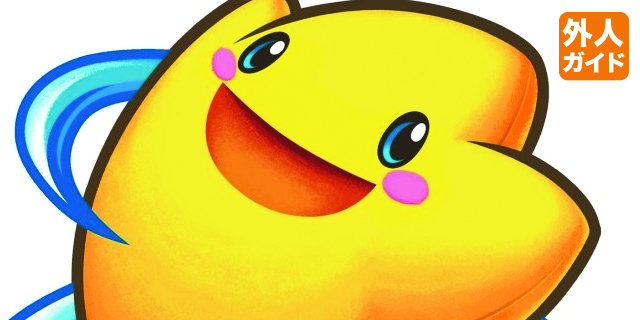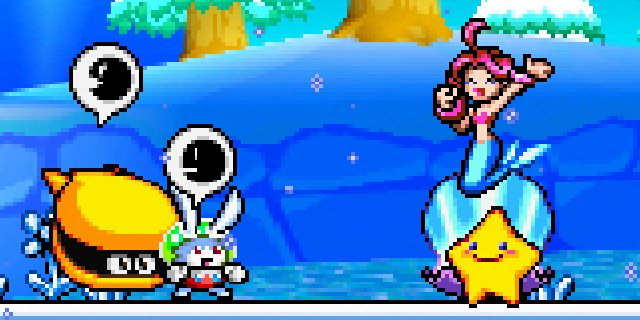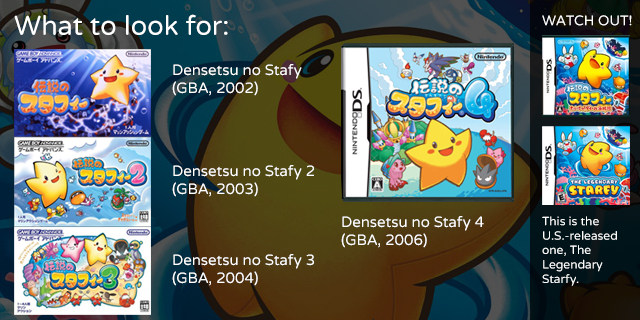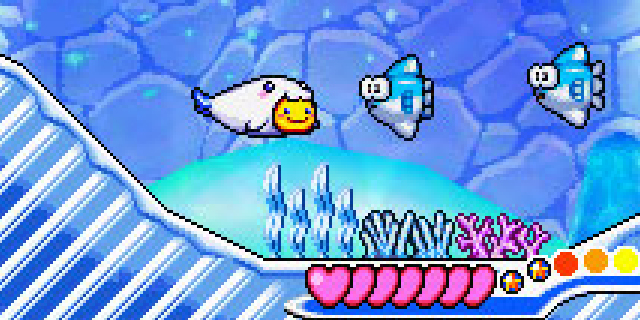
Welcome to Gaijin Guide! Or, I guess, welcome back, but I’ll get to that later. This is a column devoted to the world of import games, from the lens of the outsider. I’ll never ask you to become fluent in Japanese (or any other foreign language, when applicable), and when possible, I’ll help you navigate the little bit you’ll need to get into most games. More than that, though, I hope to provide context, that valuable insight into games we just never saw in the States.
In that spirit, I want to start with a series ripe with apt metaphor: Starfy. Starring a protagonist that is half-starfish, half-star and officially-neither, it’s only had one Western release: 2008’s The Legendary Starfy, the last game to date and part of the dismal-selling spurt of DS localizations from Nintendo that also included Glory of Heracles and Rhythm Heaven. (Both of those deserve their own columns someday.) It’s an aquatic platformer… most of the time. Some levels bring Starfy out of water, where his acrobatics are less effective.

Much like Starfy, we’re at home in our normal environment, and we’re limited when taken out of it. For us, this means not understanding the language of the game we’re playing. It’s a limiting force, certainly, but it’s telling that, despite the limitations or even because of them, these above-water sequences are among the game’s most compelling sections. Maybe playing a game in a language you don’t know has the same effect; if you set aside story or even basic comprehension of what you’re supposed to do, you may find yourself enjoying the little things just a bit more.
Also, much like Starfy himself, his series also only surfaces a fraction of the time. We got one of the games in the West, but it was the fifth game in the series, and all have their strong points. It’s a common thing with many Japan-centric series to come ashore only often enough to pique interest, and there’s so much depth in the rest of the franchise history to explore. I’ll try my best to show you through these games, and help you submerge into their worlds.
It is for these reasons that Starfy is probably the closest this column has to a patron saint. But I’ll spare you more metaphors and get to telling you about the games.

Import File:
Densetsu no Stafy
Released in U.S.: The Legendary Starfy (DS, 2009)
Not released in U.S.: Densetsu no Stafy (GBA, 2002), Densetsu no Stafy 2 (GBA, 2003), Densetsu no Stafy 3 (GBA, 2004), Densetsu no Stafy 4 (DS, 2006)
Developer: Tose
Publisher: Nintendo
Language barrier: Minimal. Menus can be guessed through, but without understanding in-level help text, you may guess the wrong thing to do occasionally.
The first game in the series known in Japan as Densetsu no Stafy (伝説のスタフィー, The Legend of Stafy) was released in 2002 for the Game Boy Advance. But this wasn’t the real beginning. The project started life as a Game Boy title, then was retooled for the Game Boy Color, and finally overhauled late in development when all work on Color titles was halted. It’s one of the rare titles developed by Tose that the company actually put its name on; it usually works behind the scenes as a hired hand, helping with ports and compilations. It’s also taken first chair on Dragon Quest Monsters, Super Princess Peach and Rocket Slime titles, cementing its reputation for whimsical portable fun.
Most of the gameplay takes place underwater, as Starfy spins and swims around levels, occasionally teaming up with water-bound friends to an effect similar to the transformations in Yoshi’s Island. Because Starfy can go wherever he wants, it ends up feeling a lot like the floaty air platforming of a Kirby title, too. When he emerges from the water, he can’t jump very high or attack very far, and these segments require much more care and precision. In later games, you’re sometimes even able to play as Starfy’s sister Starly, a pink star-thing with a bow that has similar moves with slight variations.
Also like Kirby, each entry includes minor, throwaway minigames you can try as a change of pace. They’re the types of challenges you’d expect from a developer usually following someone else’s script; this is the chance for a coder to put together something small and silly and let others try it out.

The second GBA title broke the levels up into segments, providing a bit more structure to the game and making it a bit friendlier to those who want to just play for a few minutes. The third followed suit, but neither innovated too much. Why? Each was produced from start to finish in less than a year, a far cry from the original’s 7-year development time. Tose knew how to crank out levels with a pre-existing engine and assets, and that’s just what it did.
Densetsu no Stafy 4 made the leap to the Nintendo DS, using the extra screen real estate to play with the level structure and objectives. These are just the kind of innovations that make it more interesting for most people, but probably not the best for a budding importer. Even still, playing any older Starfy game will be much easier after playing the one English one.
Oh, and right: about that welcome back thing. This column actually existed, albeit briefly, in 2007. As importing becomes easier and easier, and as interest in unlocalized titles continues to grow, it seemed like time to try again.
So what do you want to see covered in Gaijin Guide? I have a lot I’d like to talk about, but I’m always up for requests and suggestions.



















